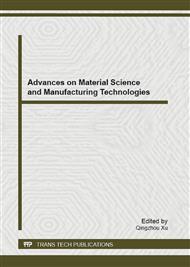p.237
p.246
p.250
p.259
p.263
p.268
p.273
p.278
p.283
The Rule of Migration and Transformation of Naphthalene in Groundwater
Abstract:
Naphthalene was used as a characteristic kind of organic pollutant in migrating-and--transforming process in groundwater. Added gravel sand and fine sand which are commonly found in the underground environment in two simulated columns, analyze its migration and transformation consequence by simulating adsorption characteristics experiment. The results show that, Freundlich isotherm adsorption equation can better describe the outcome of adsorption process for naphthalene, the KF are 0.9954 and 1.0481. Fine sand for naphthalene adsorption effect is stronger according to this experiment, and the quantity is 0.029 mg•kg-1. In the migrate process of naphthalene, fine sand has an obvious retarding effect, the factor Rd=41.43.
Info:
Periodical:
Pages:
263-267
Citation:
Online since:
December 2012
Authors:
Keywords:
Price:
Сopyright:
© 2013 Trans Tech Publications Ltd. All Rights Reserved
Share:
Citation:


